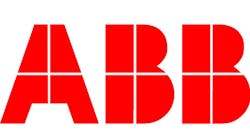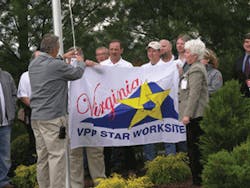ABB Inc. has a unique approach toward hazard assessment, says Darryl Hill, Ph.D., CSP, vice president of safety and health at the design and engineering company: safety observation tours (SOP). But these aren't just any safety observations; these are designed to allow management to tour facilities, sites or projects and regular intervals and interact with employees.
Senior executives are required to conduct a SOT at least quarterly, and must tour an entire department. Safety and health advisors participate in every SOT for a specific site, to ensure consistency in the process. Participation in SOT is part of ABB's performance management program.
"One of the strongest indicators of safety performance is workplace culture and leadership quality," says Hill. "ABB makes sure that the two predictors for safety and health performance remains in the forefront for company strategies, goals and initiatives."
Each senior level manager completes a 2-day Safety & Health Leadership & Accountability workshop. As an outgrowth of the workshops, each senior manager develops a personal accountability plan, which includes actions to improve the safety culture. Each senior manager personal accountability plan is tracked and measured and subsequently reported to the ABB Executive Committee. Originally, the workshop was targeted at the first two management levels at the company, but because of its popularity and success, has been cascaded down to the next management levels.
Executives are not the only employees involved in training and workshops. "ABB invests over $1.5 million annually in safety and health training," says Hill.
Since many ABB employees work remotely at project sites, online safety training is a key format. Also, the company uses hands-on training, coaching and job shadowing. A training matrix identifies all regulatory and job-related safety training required for all employees and contractors.
"Safety training is critical to ensure competency that employees know and understand what is expected. It is also an important communication tool to keep safe work practices at the forefront of safety awareness," says Hill, who adds that on average, ABB employees receive 40 hours of EHS training per year while the safety advisors average 65 hours of professional development a year.
To that end, the company also offers Safety Fairs for both employees and their families at several sites. The fairs include ergonomists, dental professionals, firefighters, police officers and nutritionists. Employees may become a trainer on topics where they have the knowledge and the comfort level to teach their coworkers. "There is a waiting list of volunteer employees willing to spend time teaching their coworkers on safety and health topics," says Hill.
Other unique programs include:
RU Safe Program – This program focuses on human error, desired behavior and human factors and considers how certain characteristics and behaviors such as fatigue, training and competence, ergonomics, maintenance error, stress and information overload can impact safety and culture.
Stop Take Five – Targeted at field service personnel but also integrated into project site management, Stop Take Five stresses the importance of an abbreviated job hazard analysis where a formal safety program or procedures are not developed (usually found at a customer site). The completed Stop Take Five checklist forms are sent in real time to a database to verify that the assessment was completed.
"ABB strives to establish a safety culture in which everyone feels personally responsible for the safety at work," says Hill. "Safety culture is a combination of norms, attitudes and beliefs that shape how people actually perform their work, beyond procedures and equipment."
| ABB Inc., Cary, N.C. | |
| Industry: Automation & Power Technologies (Engineering Services) | |
| Employees: 20,000 in North America | |
| Sites: 50 | |
| EHS Professionals: 65 full-time, NAM safety and health VP, five division safety and health directors, 1 safety and health assistant, 50 site-level safety and health coordinators |


